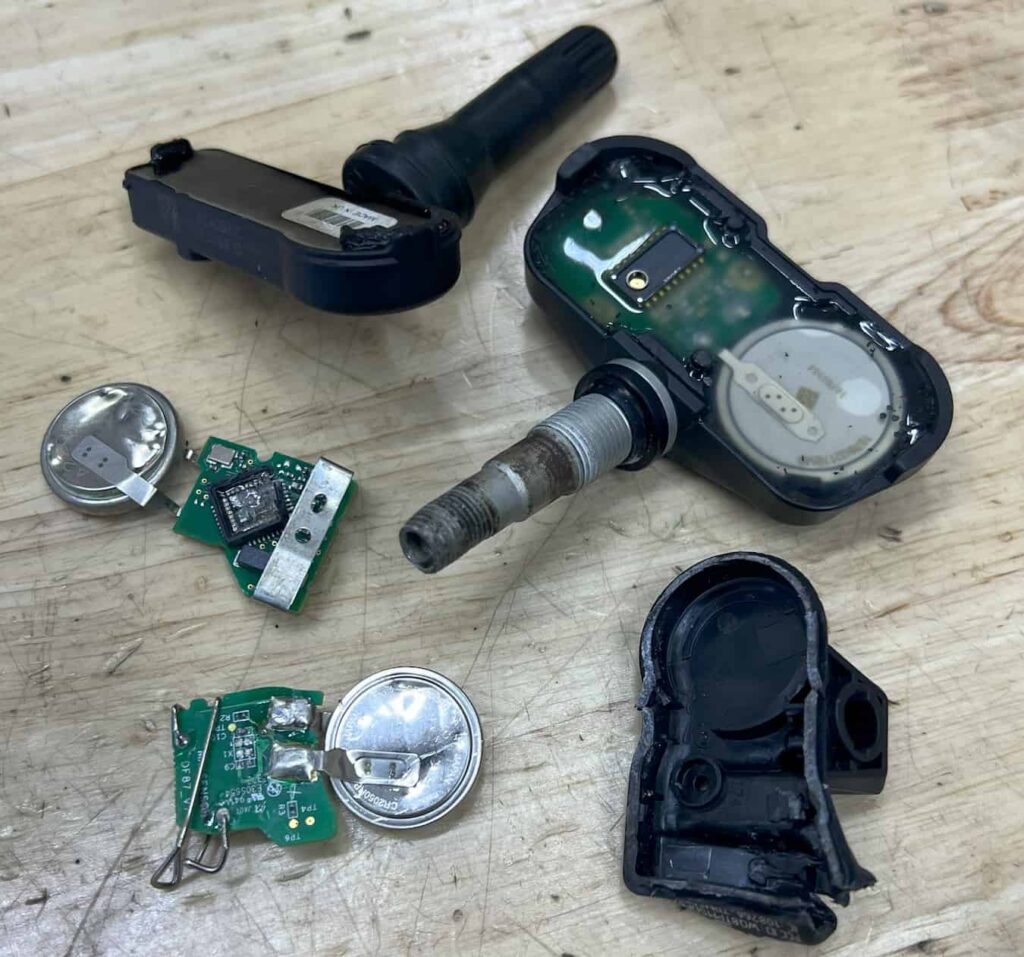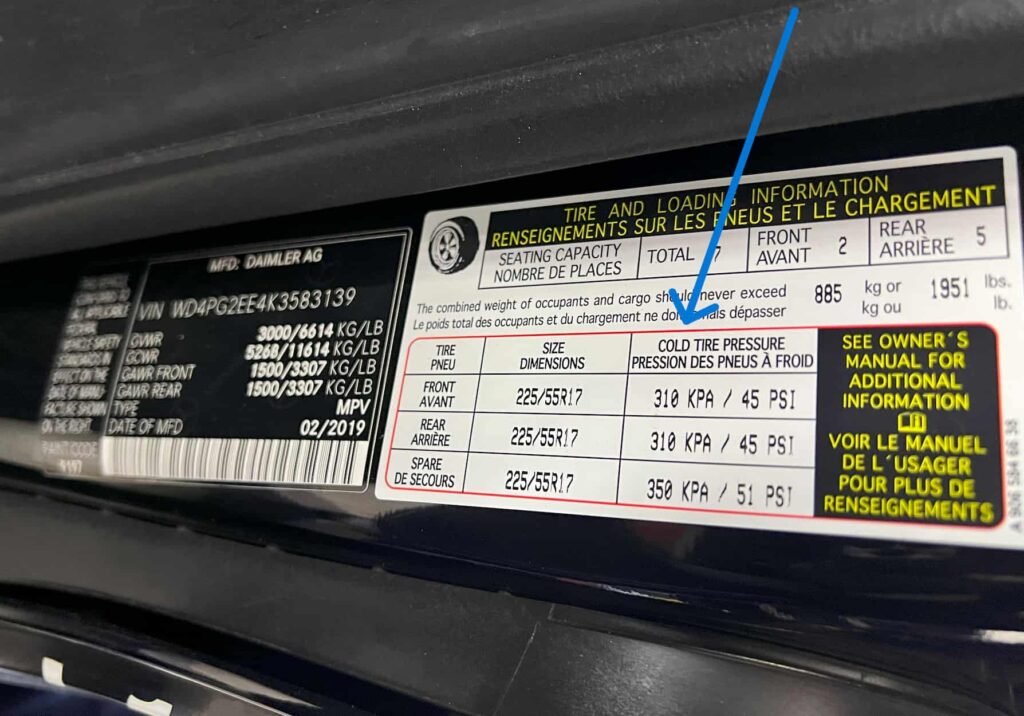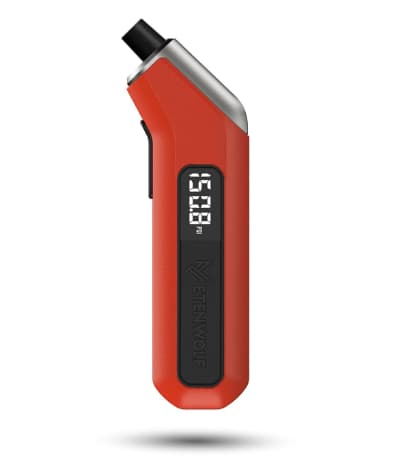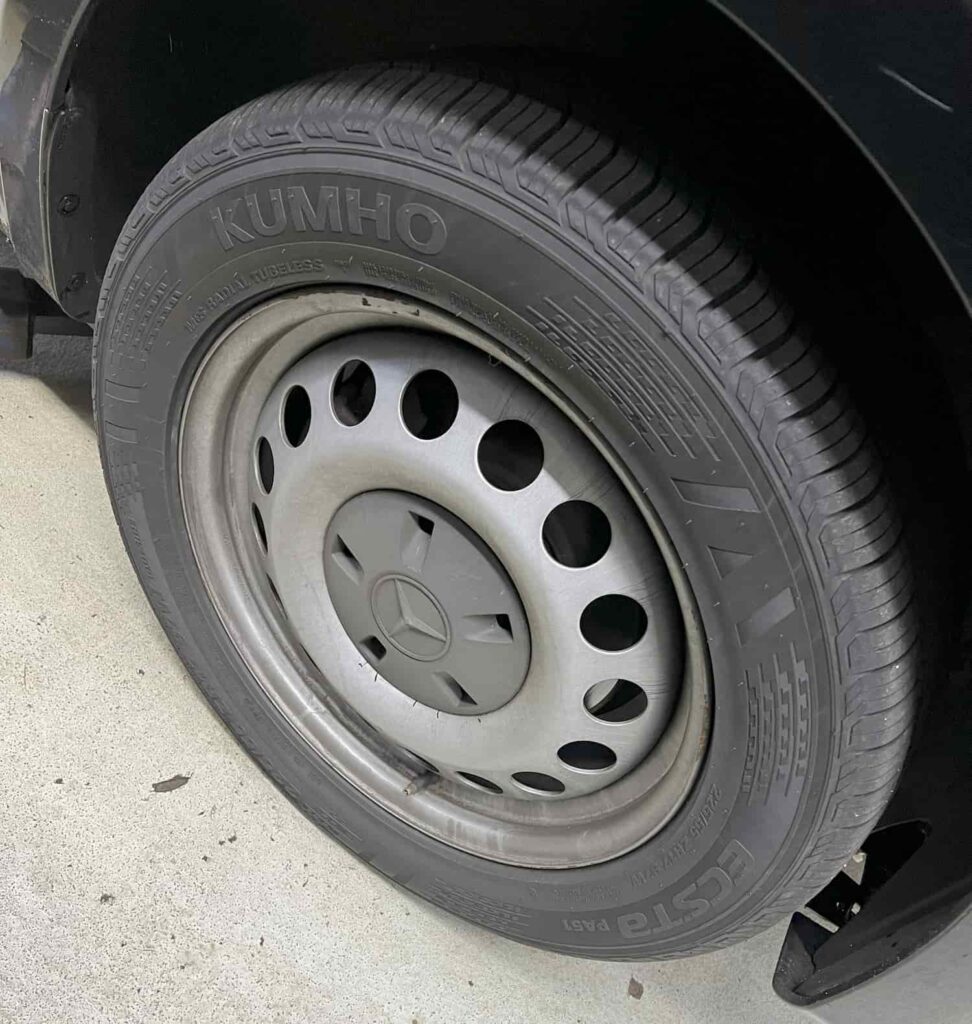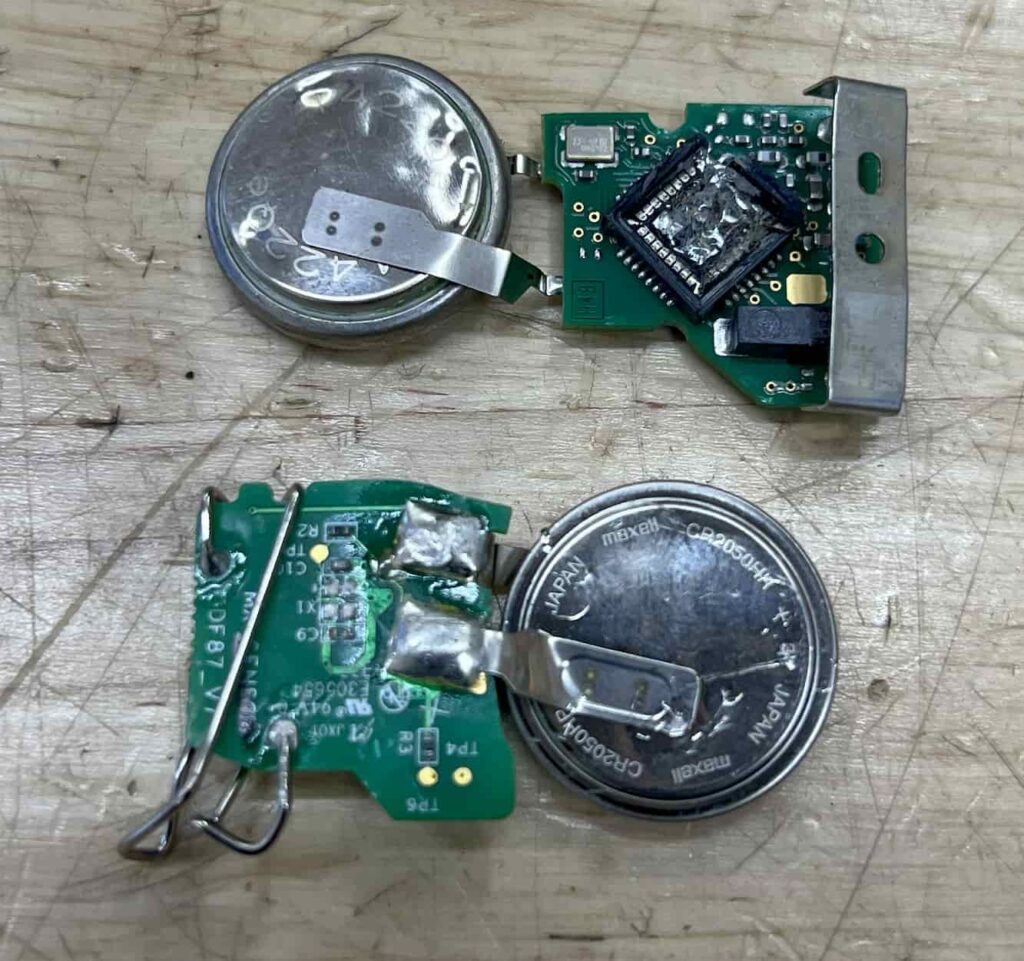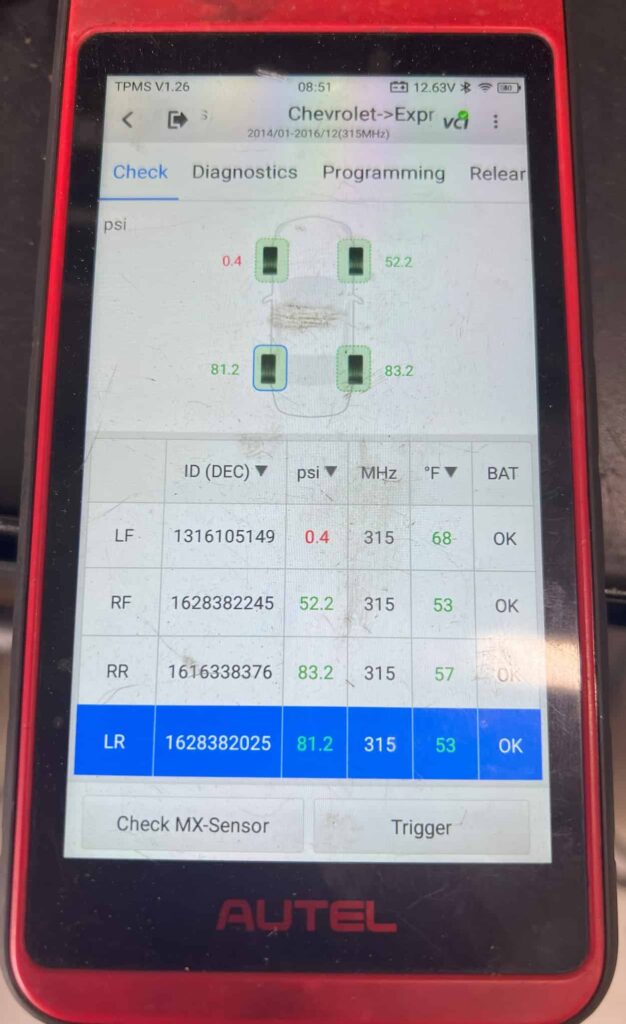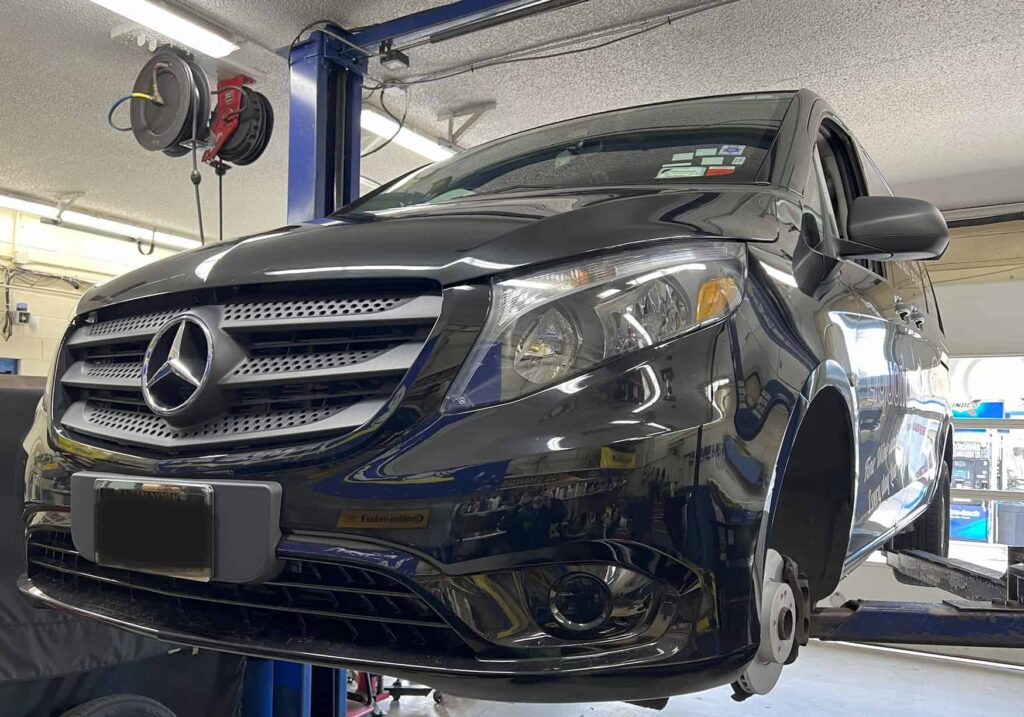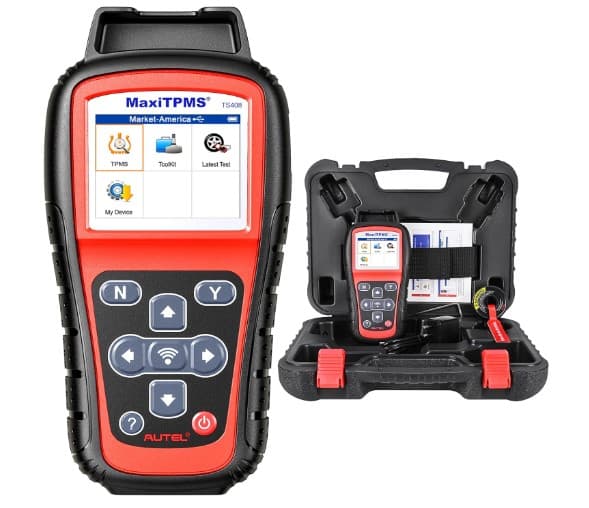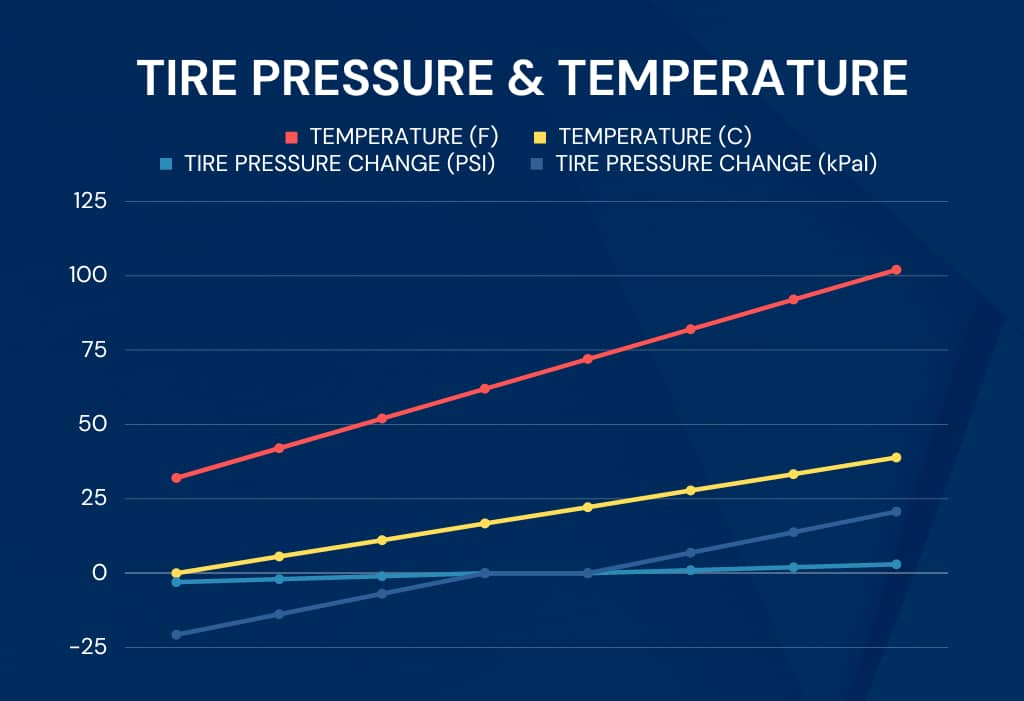How to Reset and Calibrate Mercedes Metris Tire Pressure System
Steps to Reset Mercedes Metris Tire Pressure Light (2015-2021)
Turn the Mercedes Metris key into the second position (run) in the ignition or start the engine.
Press the RIGHT or LEFT arrow buttons on the left side of the steering wheel to scroll through the information display screen.
Scroll to SERVICE (SERV).
Scroll down to TIRE PRESSURE and select the OK button on the steering wheel.
The current tire air pressures will display, press the DOWN arrow on the steering wheel one time.
The information display screen will read “Use current pressures as new reference values:”
Press the OK button on the steering wheel.
A confirmation message will appear “Tire Press. Monitor Restarted”
Sdsfd
Steps to Reset Mercedes Metris Tire Pressure Light (2021-2024)
Have the Mercedes Metris engine running or with the ignition in the Run position.
Press the button on the left side under the speedometer until a message on the information display reads “Tire Pressure Continue: Press R”.
A message will appear that reads “Monitoring Active Restart: Press R”.
Press the R button on the right one time.
A message will appear that reads “Tire Pressure OK? – Cancel Yes +.”
Press the + Button on the right side of the tachometer.
A confirmation message appears “Tire Press. Monitor Restarted.”
ghg
What is the Mercedes Metris TPMS?
The Mercedes Metris comes equipped with an advanced TPMS (Tire Pressure Monitoring System), a crucial element for maintaining the right tire pressure. This system comprises four individual sensors, each nestled within each tire, and operates in conjunction with a specialized TPMS receiver module. Furthermore, it seamlessly connects with the vehicle’s central processing unit, often known as the ECU (Engine Control Unit) or ECM (Engine Control Module). This integration is key to maintaining the ideal tire pressure for the Mercedes Metris, ensuring both safety and performance.
HOW DOES THE MERCEDES METRIS TPMS WORK?
Mercedes Metris Tire Pressure Sensors: In each tire of the Mercedes Metris, there’s a sophisticated sensor system made up of a tiny micro chip, a battery, and a radio transmitter, all encased in a compact plastic unit attached to the valve stem. The battery powered micro chip measures the Metris tire’s air pressure and the transmitter sends this data to the van’s TPMS receiver using radio waves. (typically 315 MHz or 433 MHz)
Mercedes Metris TPMS Receiver: The Mercedes Metris TPMS receiver module is a key component in the tire pressure monitoring system, capturing air pressure and temperature data from the sensors in each tire. It then forwards this data to the Mercedes Metris’ main computer system.
Mercedes Metris Engine Control Unit (ECU): The ECU of the Mercedes Metris plays a critical role in evaluating tire pressure data. It assesses the information against Mercedes’ predefined air pressure standards for the Metris. For example, if the pressure in a tire drops to 34 Psi, which is considerably lower than the recommended 45 Psi, the ECU activates a Low Tire Pressure warning. This alert is displayed to the driver on the vehicle’s information screen in message form and as a low tire pressure fault warning light.
MERCEDES METRIS WHEEL SIZE AND TIRE PRESSURE
TIRE SIZE | Front Psi/kPa | Rear Psi/kPa |
225/55R17 | 45/310 | 45/310 |
IMMEDIATE STEPS TO TAKE WHEN YOUR TIRE PRESSURE LIGHT ACTIVATES
If your Mercedes Metris low tire pressure light turns on it’s essential to safely pull over and check the tire air pressures. It’s advisable not to depend entirely on the Mercedes Metris’ tire pressure display, but rather to use a digital tire pressure gauge for accuracy. Additionally, conduct a thorough inspection of each tire and wheel for any visible issues.
UNDERSTANDING THE CAUSES OF LOW TIRE PRESSURE LIGHT TRIGGERING
Overinflated or underinflated tire air pressure.
Use of the Mercedes Metris’ emergency spare tire, which lacks a TPMS sensor.
Worn-out or faulty batteries in the Mercedes Metris tire sensors.
Issues with the TPMS receiver module or the Van’s central computer system (ECM/ECU).
Interference from external electromagnetic sources, such as nearby radios, cell phones, or alarm systems.
Air temperature shifts of 10 degrees Fahrenheit or more.
Overloading the vehicle beyond its maximum capacity or towing more than its specified limits.
Using tire chains.
Excessively dark window tints.
Extreme changes in road surface temperatures.
Installing tires that do not match the size or specifications intended for the Mercedes Metris.
Damage to TPMS sensors during tire services or replacements.
Neglecting to reset or recalibrate the Mercedes Metris TPMS after tire inflation or maintenance.
Tire issues such as punctures or slow air leaks.
Physical harm to tires or wheels from road debris or wear.
Malfunctioning or improperly installed valve stems on the tires.
REASONS TO SET MERCEDES METRIS TIRE PRESSURE ONLY WITH COLD TIRES
Examining the tire pressure information on the Mercedes Metris driver’s side door panel reveals the recommended COLD tire pressures for both front and rear tires. “Cold” tire air pressure means the pressure measurement should be taken when the tires haven’t been warmed up by driving. For instance, the suggested air pressure for the Mercedes Metris’ tires is 45 PSI, this pressure should be set when the tires are cold – either before the van is driven or after it has been parked for a minimum of 3 hours. Adjusting tire pressure while the tires are warm can lead to overinflation.
HOW OR WARM TIRES IMPACT ON AIR PRESSURE
If your Mercedes Metris tires are warm because of recent driving or external heat, the air pressure readings can misleadingly seem higher than they actually are. Altering the tire air pressure in such conditions typically results in overinflation, as the actual air pressure is lower than the reading suggests. For instance, driving your Mercedes Metris for about 20-30 minutes can cause the tire air pressure to rise by approximately 2-5 Psi more than the initial cold pressure.
CAN SHIFTING ALTITUDES ACTIVATE THE TPMS WARNING LIGHT?
The tire pressure warning in your Mercedes Metris usually doesn’t trigger just from climbing in altitude. When you drive to higher elevations, the air pressure inside your tires increases. Expect a rise of about 0.5 Psi in tire pressure for every 1,000 feet of elevation gain. So, if you descend from an altitude of 9,000 feet to sea level, the tire pressure is likely to decrease by around 4.5 Psi.
MERCEDES METRIS TIRE PRESSURE MONITORING: UNDERSTANDING SENSOR BATTERIES
Every Mercedes Metris tire pressure sensor comes with a built-in, non-replaceable, and non-rechargeable silver oxide battery. The lifespan of these batteries varies, typically lasting between 5 to 15 years, or up to about 150,000 miles. When the battery in a Mercedes Metris tire pressure sensor runs out, the whole sensor needs to be replaced. To check the specific battery status of your Mercedes Metris tire pressure sensors, use a TPMS diagnostic tool.
IS IT SAFE TO DRIVE THE MERCEDES METRIS WITH THE TIRE LIGHT ON?
Driving your Mercedes Metris with low tire pressure can be hazardous. If a tire is losing air, it’s crucial to have it repaired or replaced quickly. However, if the low tire pressure alert is triggered by a tire pressure sensor battery running out of charge, it’s still safe to drive as long as the tires are at the correct air pressure.
MAXIMUM DISTANCE THE MERCEDES METRIS CAN TRAVEL WITH A LOW TIRE ALERT
When the Mercedes Metris low tire pressure warning is triggered there’s no set distance or time that’s considered safe to keep driving. It’s imperative to stop as soon as possible, visually inspect all tires, and manually check the pressure of each tire with a digital air pressure gauge. Depending solely on the air pressure readings provided by the Mercedes Metris’s onboard information system is not recommended.
FITTING NEW WHEELS OR TIRES ON MERCEDES METRIS: TIRE PRESSURE SENSOR CONSIDERATIONS
If you’re considering swapping the wheels or rims on your Mercedes Metris, you have a few options:
Move the existing Mercedes-Benz tire pressure sensors from your current wheels to the new ones.
Purchase programmable tire pressure sensors, install them on the new wheels, and then pair them with the Mercedes Metris ECU. For this, you’ll require a TPMS programming tool.
If you replace the Mercedes Metris tires, follow the standard steps to calibrate the tire pressure monitoring system.
WHY IS THE MERCEDES METRIS LOW TIRE ALERT FLASHING?
When the Mercedes Metris tire pressure alert flashes, it signifies a disruption in the communication between one or more tire pressure sensors and the vehicle’s ECU. This issue typically stems from one of three scenarios:
The vehicle’s spare tire is in use.
The battery in a tire pressure sensor is either exhausted or nearing depletion.
There is damage or a fault in a tire pressure sensor, causing a break in its communication with the Mercedes TPMS receiver module.
IS IT POSSIBLE TO DISABLE THE MERCEDES METRIS TPMS?
The Mercedes Metris tire pressure monitoring system is always operational and cannot be deactivated. If the tire pressure sensors are taken out and replaced with valve stems that lack sensors, the tire pressure indicator will first flash and then remain steadily illuminated. This condition is identified as a malfunction of the TPMS (Tire Pressure Monitoring System).
DIAGNOSING TIRE PRESSURE SENSORS WITHA TPMS PROGRAMMING TOOL
TPMS diagnostic tools are highly effective for examining and resolving issues with Mercedes Metris tire pressure sensors. They conduct an in-depth scan of each sensor and produce a comprehensive diagnostic report. This report provides insights into the sensor’s battery status, signal strength, the temperature of the tire, the sensor’s MHz frequency, and the precise location of each sensor on the van. If any Mercedes Metris TPMS Sensors show signs of a low battery or weak signal, they should be replaced with new ones. These new sensors then need to be programmed to sync with the Mercedes Metris TPMS module and ECU.
COULD WEATHER CHANGES TRIGGER YOUR METRIS'S LOW TIRE LIGHT?
One common cause for the Mercedes Metris’s low tire pressure warning to engage is changes in the weather. Tire pressure typically changes by about 1 Psi for every 10°F variation in ambient temperature. For example, if the temperature falls by 39°F over a month, your Mercedes Metris’s tire pressure could decrease from 43 Psi to 39 Psi, leading to the activation of the low tire pressure indicator. Given that air temperature shifts are inevitable, especially in certain climates, it’s recommended to check your Mercedes Metris air pressure at least once every few weeks. Ensure to do this check when the tires are cold, to avoid issues with overinflation.
REASONS BEHIND A LIT TIRE LIGHT WHEN TIRES SEEM IN GOOD CONDITION
Avoid basing your assessment of tire condition solely on how the tires look. It’s crucial to manually verify the air pressure of your Mercedes Metris tires using a digital tire pressure gauge, particularly if you have any concerns. Keep in mind: If the low tire pressure warning light turns off after you inflate the tires, it indicates that the Mercedes Metris TPMS is operating correctly.
DETECTING A TIRE LEAK WITH THE SOAP AND WATER METHOD
To accurately identify a leak in a Mercedes Metris tire, adhere to the following procedure:
Inflate the Mercedes Metris tire in question to a minimum of 45 Psi.
Mix water and liquid soap in a spray bottle.
Generously apply the soapy water over the entire surface of the tire, don’t forget to spray the bead and valve stem.
Observe the formation of small air bubbles and follow these bubbles to their source to determine the exact spot on the tire it’s leaking from.
DISCONNECTING THE 12-VOLT BATTERY TO RESET TPMS IN MERCEDES METRIS
If the low tire pressure indicator on your Mercedes Metris remains lit even after you’ve reset and recalibrated the tire pressure system, you can try turning off the TPMS light by disconnecting the van’s main 12-volt battery to clear any temporary TPMS codes from the van’s ECU. Here’s how to do it:
Turn off the engine and all electronic devices, like the radio and lights.
Loosen and detach the negative terminal clamp from the battery.
Allow a brief pause before reattaching the terminal and tightening it securely.
This method should deactivate the Mercedes Metris low tire pressure warning. However, if the low tire pressure alert on your Mercedes Metris reappears while driving, this could signify a problem with a tire pressure sensor or a tire that is losing air.
THE IMPACT OF TIRE PRESSURE ON FUEL EFFICIENCY
Maintaining the correct air pressure in your Mercedes Metris tires is essential for maximizing fuel efficiency. Underinflated tires increase rolling resistance, requiring the Metris engine to work harder and use more fuel. A mere 1 Psi reduction in tire pressure can lead to a decrease in fuel efficiency by 0.2%. Consequently, a common underinflation of 5 Psi could result in a 1% decrease in miles per gallon (MPG). In a vehicle like the Mercedes Metris, which typically achieves 19-23 MPG, this 1% drop equates to a noticeable increase in fuel consumption – approximately an extra gallon of fuel used for every 2,000 miles driven.
WHEN TO USE TIRE PLUGS AND WHEN TO AVOID THEM
Having worked as an automotive technician for ten years, I often rely on tire plugs to repair tire punctures and have found them to be both safe and effective when used correctly. However, it’s crucial not to use tire plugs on tires with excessively worn treads or on the sidewall of the tire. In the case of larger punctures or leaks, it’s better to choose a tire patch or go for a full tire replacement.
TIRE SEALANTS' IMPACT ON MERCEDES METRIS TIRE PRESSURE SENSORS
Yes, using tire sealants can break tire pressure sensors. If you use a tire sealant on your Mercedes Metris tires it’s wise to get your tire professionally cleaned at a local repair shop soon after. Additionally, have them inspect the tire pressure sensors to confirm they are still working properly.
Everything in this article is applicable to all Mercedes Metris models and versions built between 2016-2024.
Please note that this blog post contains Amazon affiliate links. This means that if you make a purchase through one of these links, we at TPMSRESET.COM may earn a small commission at no extra cost to you. We only recommend products that we personally use and believe in. Thank you for supporting us.

